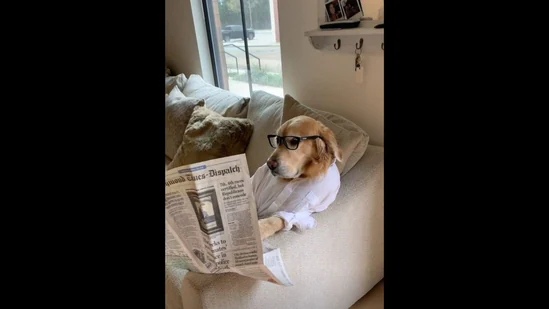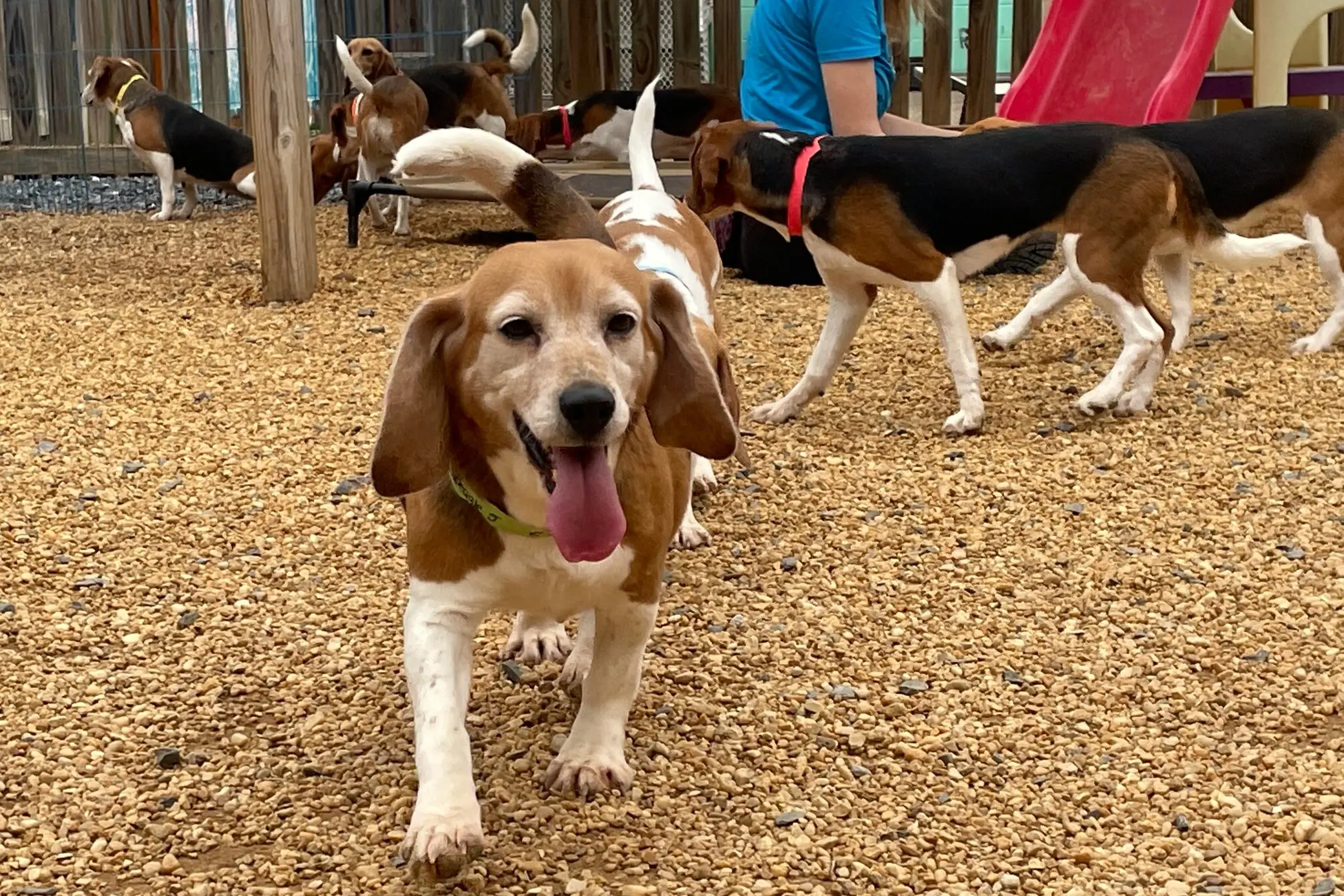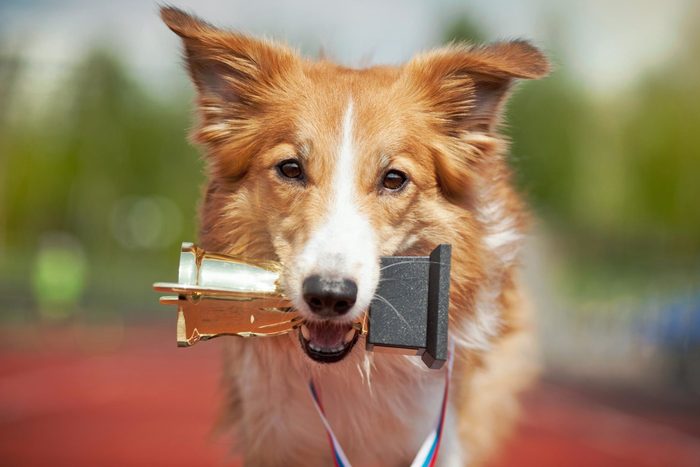Congratulations on your new dog! So, what are you going to do now? There are instances when I think my customers are putting too much emphasis on the wrong things with their new puppy, so I’d like to offer some advice.

Now, what is crucial?
To begin, you must be aware of the current stage of mental development in your puppy. Young children are not ready for algebra in Kindergarten because of their immature cognitive abilities. We can use this reasoning to teach our puppies age-appropriate skills. Start with the alphabet and basic reading skills; there will be plenty of time to cover more advanced topics later on.
There are times in a dog’s life when its mind is especially open to learning and experiencing new things. Eight to eleven weeks of age is one of those windows (possibly up to 14 weeks in some dogs but the research is still out). If you get your dog when he or she is young, you can (and should!) take advantage of the situation by establishing a pattern of positive experiences with EVERYTHING (people, other animals, places, objects, surfaces, sounds, smells, etc.) as soon as possible. Quicker is better. Although we use the term “socialization” to describe this process, it’s important to remember that “socialization” entails more than simple exposure; it also requires the formation of favorable associations.
Waiting until your puppy is fully immunized is not an option. If you wait until your puppy is fully vaccinated (16–18 weeks), you will have missed this vulnerable period, but you can (and should) be creative in how you introduce your pup to new things safely. Time’s running out.

In the middle of their teenage years, dogs enter a second period of vulnerability. The exact age at which a dog enters its “teen years” ranges from 7 to 9 months old, however this may change based on the dog’s breed, gender, and size. Although study on this phase is limited, we do know that there is a vulnerable time (or times) throughout a puppy’s development. In other words, the brain of a “teenager” is still immature. Any adult who has dealt with adolescent humans would understand what I’m talking about. Not to get too technical, but the irrational, emotional, and impulsive parts of the brain (found in humans and dogs) grow before the more logical, organized, and methodical parts of the brain. It’s true even in canine cases. I assure you that the behavioral foundation you perform with your puppy when he is 4 months old actually IS still in there someplace, even if he acts impulsively and “forgets” what he learned as a puppy. If you start preparing early, you could find your tween and adolescent years to be less trying.
Since a dog’s brain doesn’t finish developing until he’s roughly 2 years old, socialization and regular training over those first two years are crucial. This means you’re not done after that one puppy class (sorry!).

Now that you have a better understanding of your puppy’s mental development, what lessons are most useful and timely for him at this stage? I find it helpful to divide “Training” into two distinct but related areas: Management and Training Skills. In the case of a puppy younger than four to five months, the majority of what we call “training” is really management. How we handle our puppy’s needs in his surroundings, such as where he sleeps, eats, chews, plays, and poops, is what we call “management.” When you get it in your house, how do you see it? I want to know what he is exposed to and how. RIGHT HERE is where it all comes together. Let’s wait until he’s ready to tackle Algebra before we start studying it.
If we’re talking about management, here are some things I think are crucial to consider:
- Keep your dog under constant watch and/or confinement. By doing so, you’re giving your dog the best possible chance of thriving. If you restrict your puppy’s access to undesirable activities (such as soiling the carpet, biting on a chair leg, or leaping up on the coffee table), he will quickly learn the appropriate and desired behaviors you want from him. In this manner, you may instruct him on where it is okay to urinate, eat, and play (all of which are normal behaviors by the way). Put in baby gates, an X-pen, or a crate to make your home safe for your new puppy. It may take some time and effort on your part to teach your dog to like spending time in its crate. When I first crate-train a puppy, I put him or her in a small space close to me and work my way back to the room. How you wean your puppy off your presence depends on him or her. Personally, I’m not a fan of the “cry it out” method; if your puppy seems scared or afraid, try to take it easy on him. If I had to use a crate as an adult or adolescent, I prefer to have it in the same room as the rest of my family rather than in the basement or garage. To learn more about crate training, go here.
- I also administratively controlled my social life. Rarely do pups emerge from a womb in a luxury apartment building. If you happen to be a city dweller, you’ll need to acclimate them to city living as most are coming from a more suburban or rural background. Discover More About How to Make Friends and Have Fun!
- Socialization with canine peers via play and observation. Puppies learn how hard to bite via trial and error during play. Your puppy will learn to control his biting by interacting with other canine companions. Starting at 8 weeks of age, and ideally BEFORE that initial sensitive time period expires at 12-16 weeks of age, the American Veterinary Medical Association promotes early socializing, which includes play with other dogs. To learn more about how to handle puppy nipping and biting, go here.
- Training the puppy to associate good things with being handled is the goal of handling exercises. If we want the puppy to like the handling rather than just endure it, we need to match it with something it already enjoys (food, of course). I begin with the basics—petting—and work my way up to more involved procedures including tools like brushes and toenail cutters, as well as more particular areas of the body, such paws and ears.
- To prevent your puppy from developing resource guarding tendencies, you should never remove an item directly out of its mouth. I’d want to teach the puppy a Drop cue in exchange for something of more worth. Taking items from a puppy and not giving anything back might teach him to defend his possessions fiercely later on, especially when he comes into his own and develops his own “voice” via snarky or snappish behavior. When the dog is eating, I like to play a game where I sneakily stroll by and throw a treat (something more appetizing than his regular meal, such a piece of meat or cheese) towards his bowl. The last thing I want to do is distract my dog from his meal by petting him or taking his bowl away. The emergence of resource protectors is a real possibility if those conditions are met. If someone asks him to “drop” or goes by when he’s eating, I want him to think it’s awesome because he could receive something better.
In the area of SKILLS FOR TRAINING, these are the ones I usually start with:
- How to engage and occupy my dog via the use of focus games and cues.
If you plan to use a marker, such as a clicker or verbal cue, introduce it to your puppy (I recommend you do). Whenever my puppy exhibits a behavior I’d like to see more of, like keeping all f - our paws on the floor, I use a clicker to “record” the action and reward it with a treat.By using the commands “Go to Mat/Crate” and “Add-A-Count,” I’ve taught my dog to calm down and settle in response to those cues.
- By asking my dog to “drop,” or give up something, he may trade up for something better. I need him to willingly put down whatever it is I want of him.
- Engage my dog more on walks by giving him treats whenever he follows my lead or even just glances in my direction. While this lays the groundwork for subsequent leash walking training, it’s crucial to remember that a puppy’s walks are not about heeling and flawless leash walking and are instead about exploring the environment by seeing, hearing, and smelling new things (see Socialization above).
- Take advantage of your puppy’s current state of wanting to be with you by playing recall games. At about 16-18 weeks of age, your puppy may start to find other things more intriguing than you (darned adolescence).
Our PUPPY POUNCE course is now available online for four weeks, so you can do it from the comfort of your own home or office. We now have a Puppy Training Camp and a Play & Train location in Burien, Washington, for those in the Seattle region.
Because time flies, I hope you have a wonderful time with your new pet.